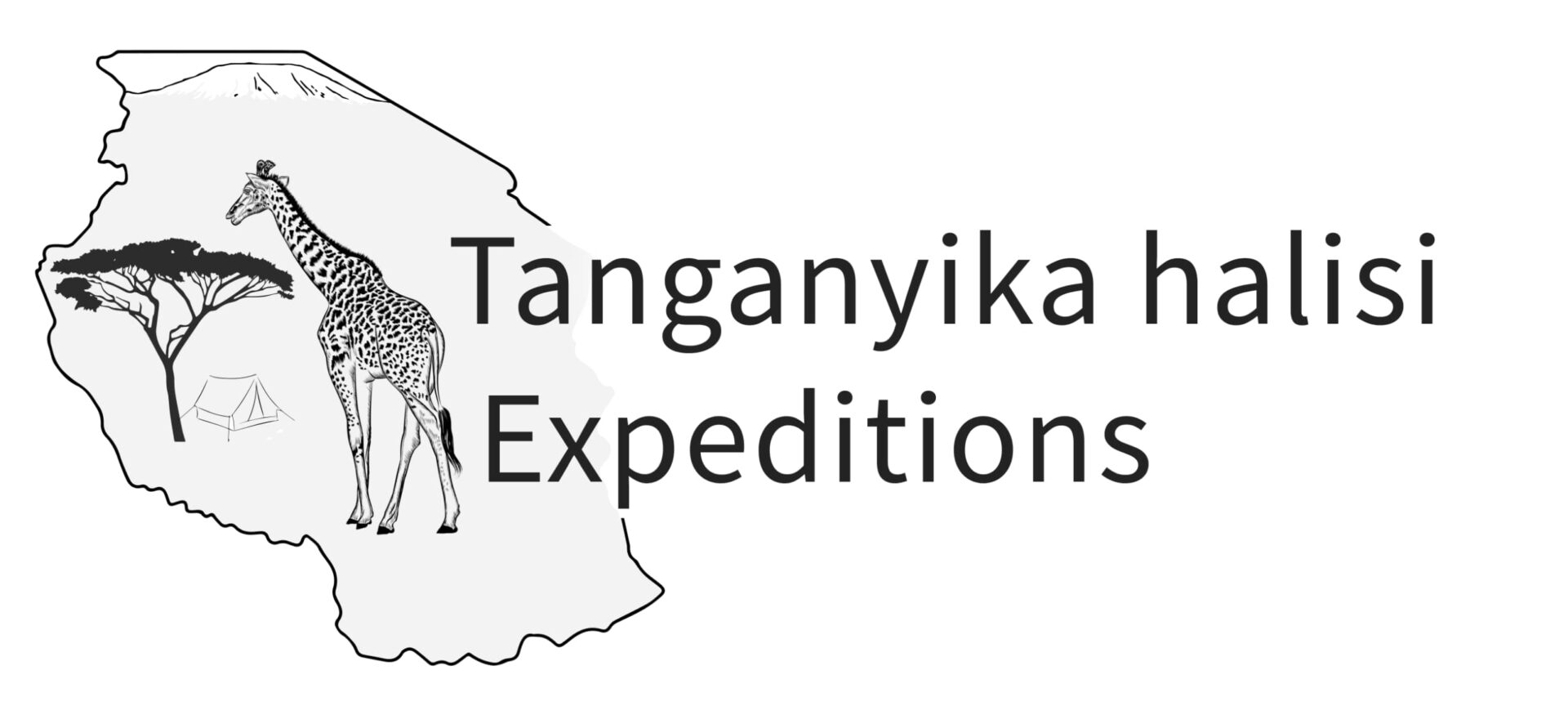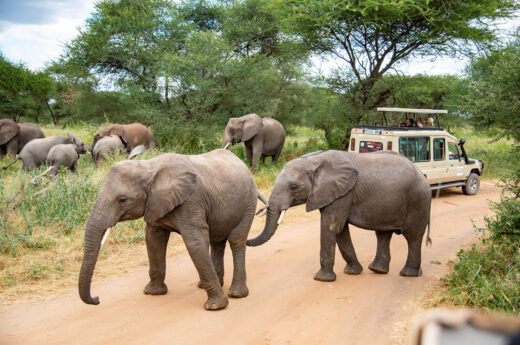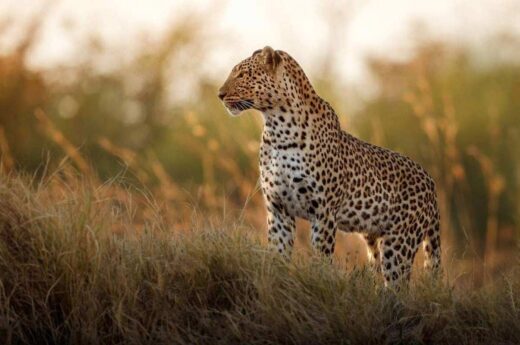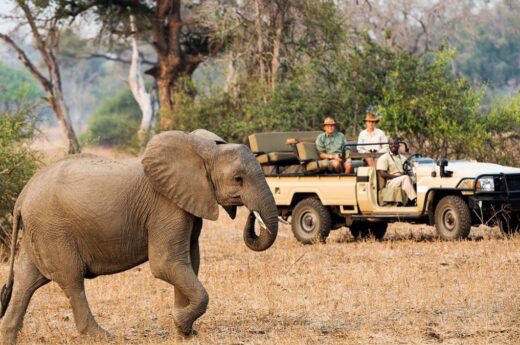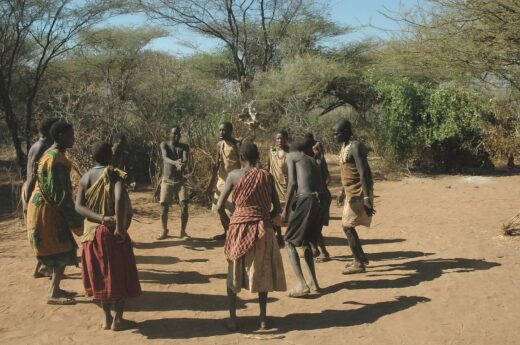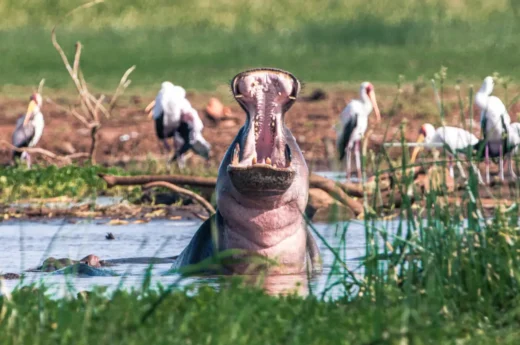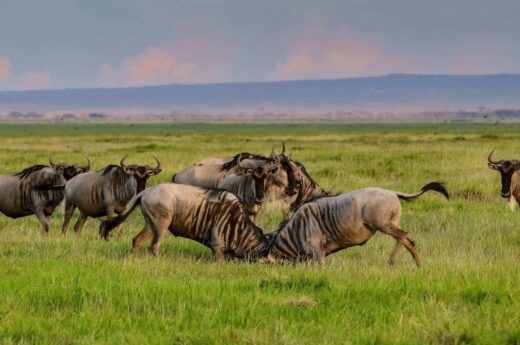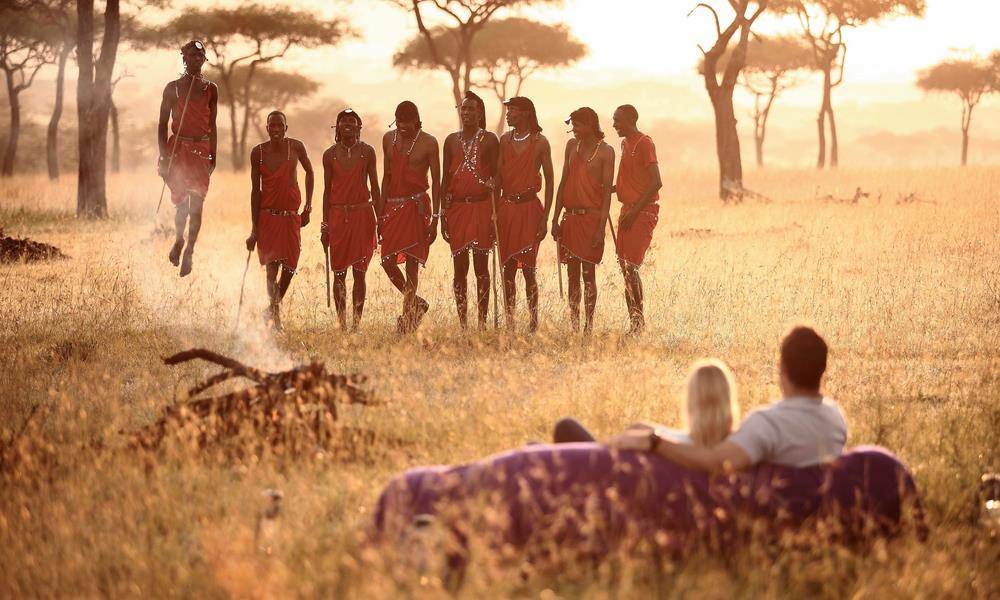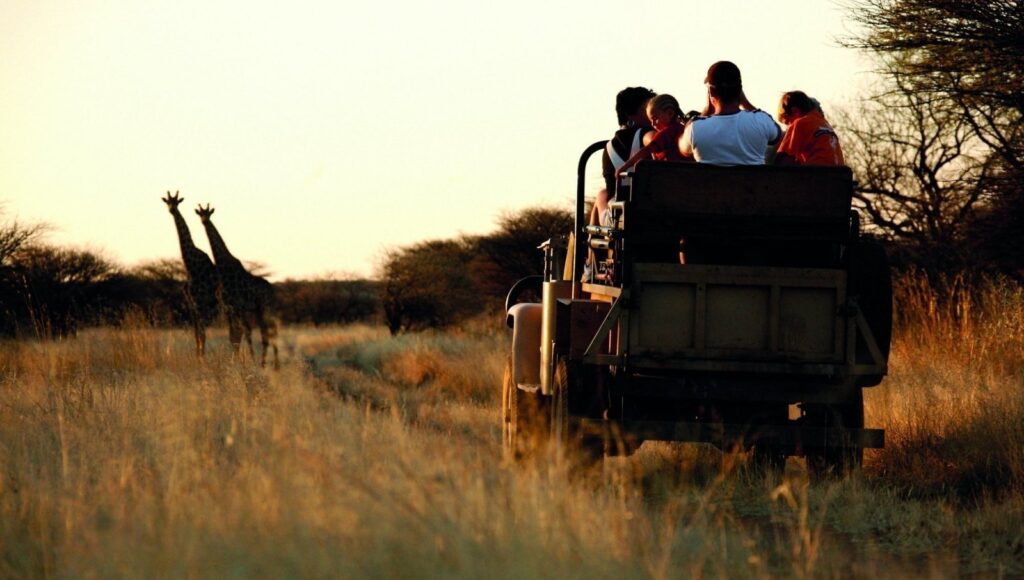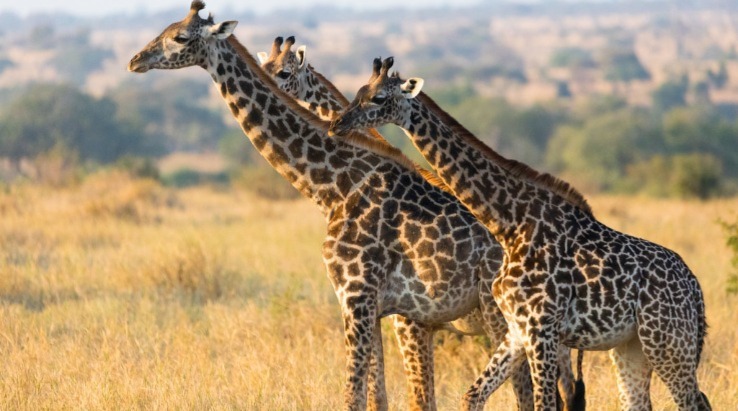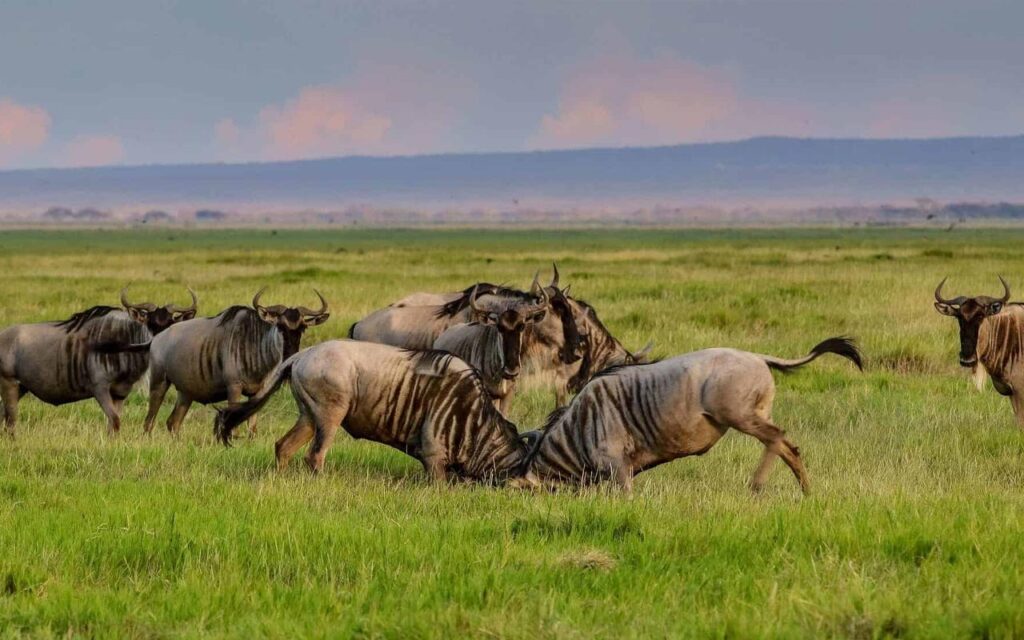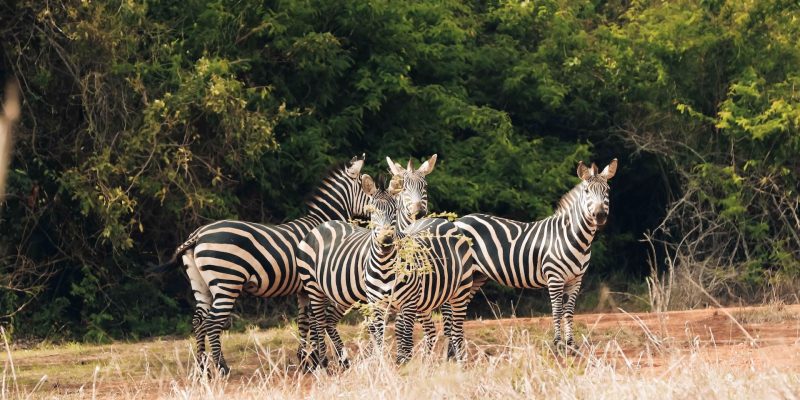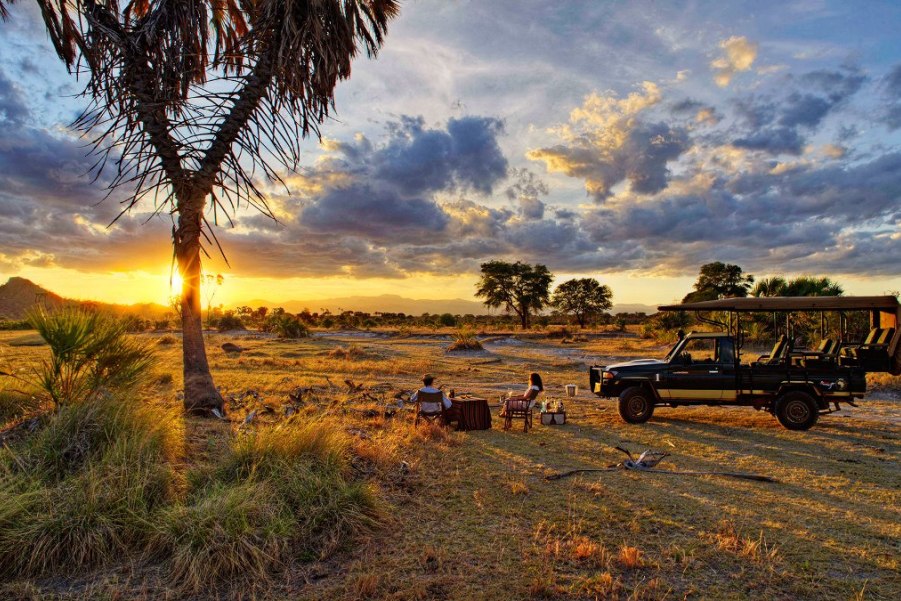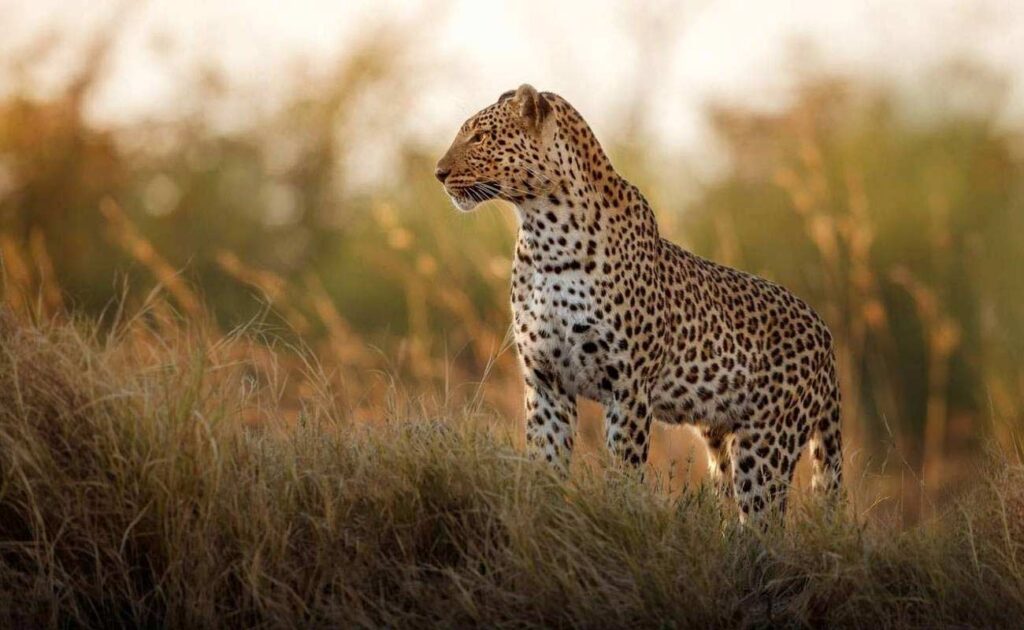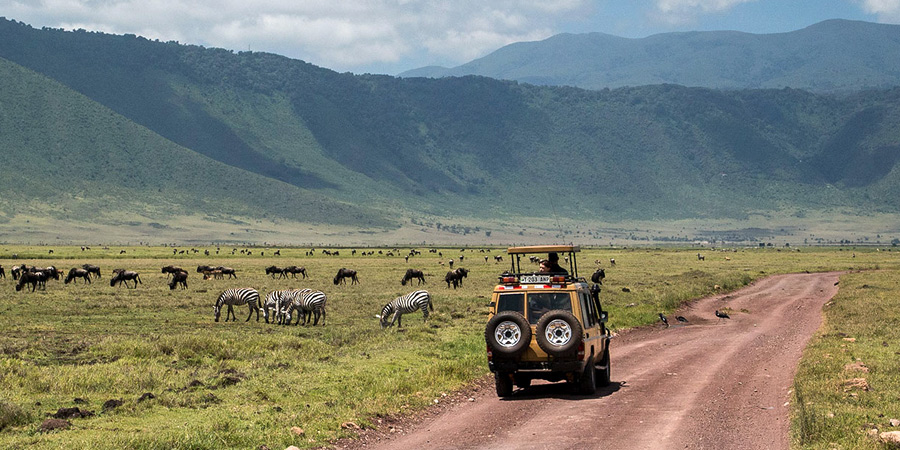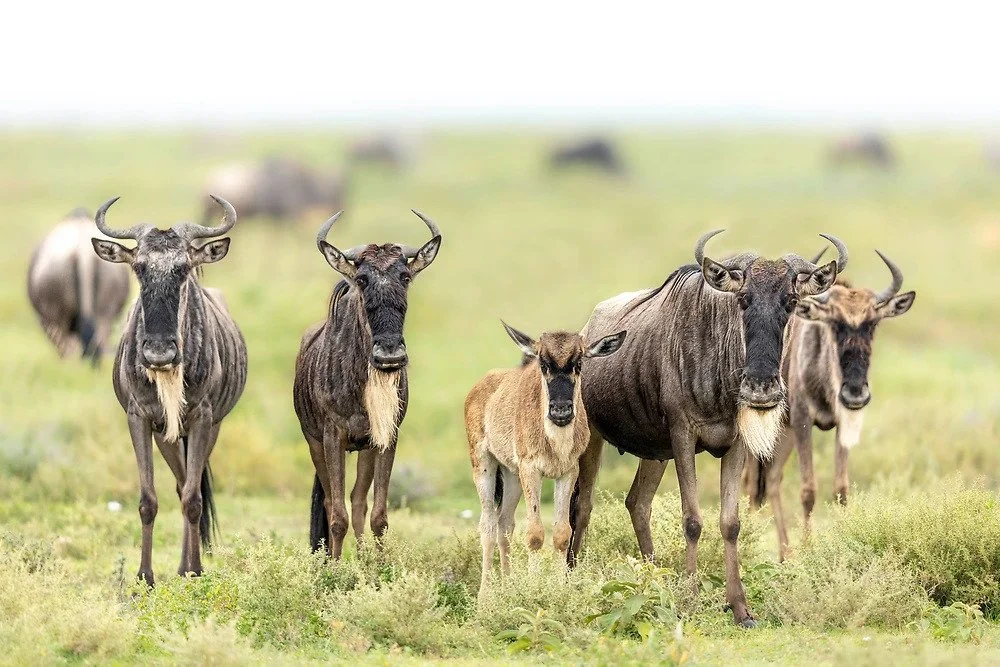
Ngorongoro Crater
A volcano that is estimated to have been marginally taller than Mount Kilimanjaro erupted two million years ago with such force that the volcano's mouth imploded. The Ngorongoro Crater, the world's largest intact caldera, remained after the dust settled.

Overview
Spanning 260 km² with a 610-meter rim, the crater’s fertile soil is a result of past volcanic activity, while underground rivers nourish the surface with springs.
Consistent water sources sustain a diverse animal population, which fertilizes the soil, leading to lush grasslands. Eventually, swamps and forests developed, creating a haven for the world’s highest density of large mammals.
Maasai tribe
A Maasai tribe visit is an option during your safari, given their livestock grazing rights. To fully experience their lifestyle and rituals, consider booking a Maasai Tour.
Activities
Game Drives
Visitors can choose half or full-day tours, joining a knowledgeable guide to explore the crater floor in search of the Big 5 and diverse wildlife.
Hot Air Balloon Trips
This serene experience presents an exclusive view of the area encircling the crater.
Archaeological Excursions
Discover the history of human evolution at nearby archaeological locations.
Cultural Visit
Learn about the area’s original cultures by exploring local family dwellings.
Picnic
Organize a provided lunch at a specific spot on the crater’s ground.
Bird Watching
Bird enthusiasts can discover more than 500 species in this region.
Ngorongoro Crater offers consistent wildlife viewing, independent of migration, due to its abundant resources. With roughly 25,000 large mammals, its flat landscape and limited vegetation facilitate animal sightings, particularly post-rain. The crater features high lion densities, but faces inbreeding issues.
Commonly seen are hyenas, but cheetahs, leopards, and wild dogs are less so, with leopards favoring Lerai Forest. Large herbivores, including hippos, buffalos, elephants, and rhinos, are plentiful, minus giraffes. Wildebeest, zebra, warthogs, antelopes, and many birds are also present, ensuring year-round East African wildlife diversity.
Within the Ngorongoro Conservation Area
Seasonal Overview
April / May – ‘Shoulder Season,’ sees consistently high tourist numbers, though with a small dip.”
June – September – “The ‘Dry Season’ brings minimal rainfall and short grass, which aids in easier wildlife viewing.”
November – May–”The ‘Wet Season’ brings forth lush, green grass, which amplifies the landscape’s natural beauty.”
